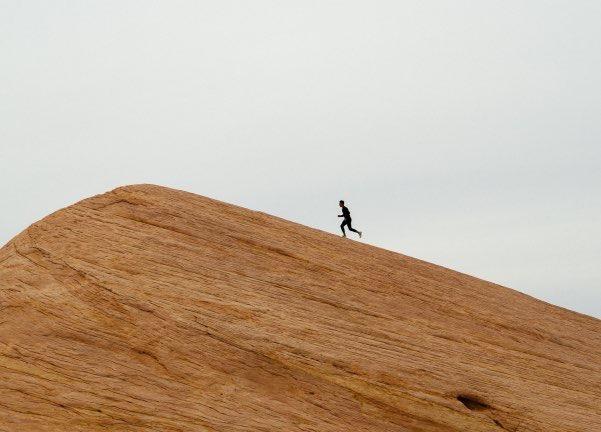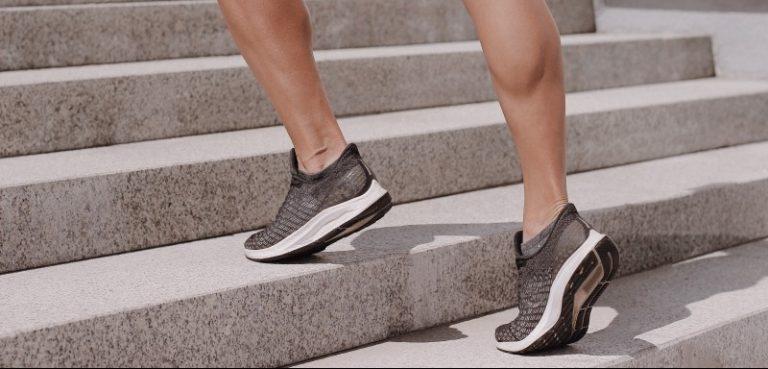What are uphill repeats?
Uphill repeats are fairly well known in the running community. Not everyone loves them, but there’s no doubt they are beneficial. They are helpful for building strength, aerobic capacity and are speed work in disguise. Running uphill is an excellent method to improve your pace in races, but it also helps improve your running technique. Good uphill form will translate into good running form in general, which in turn, makes running feel easier.
- Choosing a hill that is not too challenging as far as grade goes will be best. You can build up to tougher hills as you get more experienced
- The same goes for distance and time. Shorter reps and less distance up the hill to begin with will be advisable
- Concentrate on good form and technique as opposed to pace. We will go into form and technique below
- Do fewer reps, with more recovery in between sets
If you are an experienced runner and have been doing hill repeats then your focus will be slightly different:
- Choose a longer hill at a steeper grade. The general guideline will be the more experience you have, the harder the hill
- Focus on form and technique with the aim of making hills easier and faster
- Longer reps will be your friend. Make your uphill repeats progressive. Perhaps start at 30 second repeats, followed by 60, then 90 seconds. Build up in your sessions
- Aim to go further in the same amount of time as you get better at running hills. Try running a baseline session at the beginning of a season. Later on in the year, run the same session again. Determine if you are getting further up the hill in the same amount of time.
Key focus points for hill repeats form and technique:
- It should feel natural to have a shorter stride. Don’t try to over-stride up a hill, as this is like putting on the brakes. Short, quick strides will be the goal.
- Knee lift: When you lift your knees higher, you are generating more power when your foot hits the ground. This in turn, generates more speed. It may sound counter-intuitive, but lifting the knees higher will help you run faster, including up a hill.
- Arm Drive: Your arm drive will be one of the most important aspects of getting up these hills. Really drive your arms behind you. Pretending you are cross country skiing or that you are elbowing someone behind you will be good visual guides. Drive your arms hard and fast. This will help improve your foot turnover. The quicker your cadence, the quicker you will get up these hills.
- I like to teach my athletes to focus on getting your foot off the ground. As soon as your foot hits the ground, get it back up again.
- Don’t try to run the same pace uphill as on the flat. Try to run at the same level of effort. This is hard to do, but the point is to not work too hard on the hills and waste all your energy. You will have a downhill on the other side to make up for lost pace. Focus on your breathing and let the pace fall off slightly.
- It will feel natural to lean into the hill, however, this will make things harder. Remain upright, running “tall”. Keep your chest out and open. The objective is to not restrict your lungs from getting as much oxygen as possible.
Conclusion
Running uphill is hard, but also extremely beneficial. Work on one or two of these tips until you have them nailed. Then move on to try out some of the others. Good form and technique will greatly improve your running.
Why not try a session like this
Run uphill with the above form and technique. Focus on only one or two of the points in each session. When you reach the top of the hill, turn around and run slowly back down for recovery. When you reach the bottom, turn and go straight back up again. Do this 5 times.
After the fifth repeat, stop at the bottom for a 2 minute static recovery. Just wait at the bottom taking big, deep breaths. In that two minutes, your breathing should come back to normal.
Do that 2 more times.





Pingback: June 20th - Hill Repeats - Achieve Running Club
Pingback: July 25th - Hill Repeats - Achieve Running Club
Pingback: August 22nd - Hill Repeats - Achieve Running Club
Pingback: September 5th - Hill Repeats - Achieve Running Club
Pingback: October 3rd - Hill Repeats - Achieve Running Club
Pingback: October 17th - Hill Repeats - Achieve Running Club
Pingback: November 28th - Hill Repeats - Achieve Running Club
Pingback: January 2nd - Hill Repeats - Achieve Running Club
Pingback: January 16th - Hill Repeats - Achieve Running Club
Pingback: February 27th - Hill Repeats - Achieve Running Club
Pingback: March 26th - Hill Repeats - Achieve Running Club
Pingback: May 7th - Hill Repeats - Achieve Running Club
Pingback: June 6th - Hill Repeats - Achieve Running Club
Pingback: July 2nd - Hill Repeats - Achieve Running Club